Renault Megane 2 is equipped with electric power steering.
Steering is adjustable for rake and reach
Rack and pinion steering.
The control unit in the electric power steering system is the electronic control unit
Based on information received from the wheel speed, vehicle speed and steering angle sensors, the electric power steering system control unit activates the gearmotor to provide additional torque to the steering wheel.
The steering of the car consists of a steering wheel, a steering column on which an electric booster is installed, a steering mechanism, two steering rod ends connected by hinges to the steering knuckles of the front suspension.
The electric power steering system, along with the electronic control unit, includes sensors, actuators, connectors and fuses.
The control unit for the electric power steering system is connected by electrical wires to all sensors in the system.
The electric power steering control unit determines the direction and amount of additional force depending on the vehicle speed and signals from the torque sensors and wheel angle.
As a result, the electric power steering system control unit adjusts the effort on the steering wheel depending on the vehicle speed: the lower the vehicle speed, the greater the effort; on the contrary, at high speeds, the effort on the steering wheel is minimal.
This characteristic of the electric power steering provides ease of maneuvering when driving at low speeds and a sense of feedback on the steering wheel when driving at relatively high speeds.
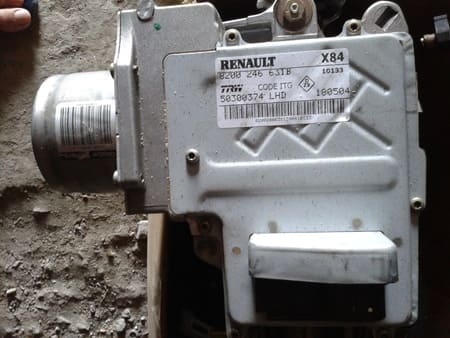
The control unit for the electric power steering system, mounted on the steering column, detects a malfunction in the system, identifies and stores its code.
The control unit puts the system into emergency mode, turning off the electric booster.
The torque sensor detects the value of the angle of twist of the steering shaft and converts it into an electrical signal supplied to the electric power steering system control unit.
The torque sensor is built into the power steering system control unit.
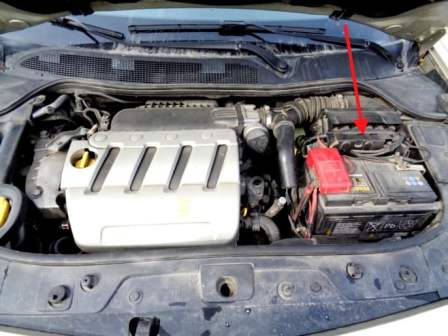
The electronic engine control unit (fig. 2) transmits data on the engine speed to the electric power steering system control unit.
The electric power steering gearmotor mounted on the steering column generates additional torque when it is energized by signals from the electric power steering system control unit.
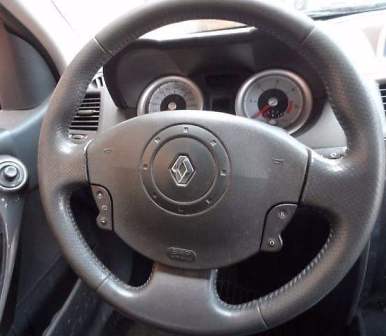
The steering wheel is equipped with an airbag and a horn switch, and, depending on the configuration, it can also be equipped with audio and cruise control buttons.
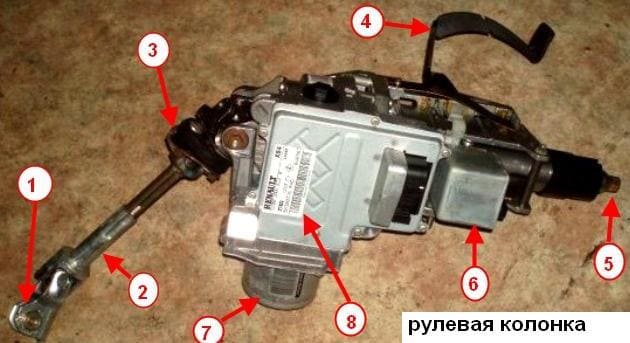
Steering column: 1 - lower cardan joint of the intermediate shaft; 2 - intermediate shaft; 3 - upper cardan joint of the intermediate shaft; 4 - lever for adjusting the position of the steering column; 5 - steering shaft; 6 - locking electromechanism of the anti-theft device; 7 - electric booster gearmotor; 8 - electric booster system control unit
The steering column (fig. 4) is adjustable in tilt and reach with the adjustment lever 4.
The steering column is equipped with an electric booster system control unit 8, which controls the electric booster gearmotor 7.
The steering column is also equipped with a locking electromechanism 6 of the anti-theft device, which blocks the steering shaft 5.

The intermediate steering shaft is connected to the steering shaft and the steering gear shaft by cardan joints.
The intermediate shaft consists of two parts: upper C and lower D.
In the event of a frontal collision with an obstacle, the upper part of the intermediate shaft enters the lower one, which makes it possible to reduce the length of the intermediate shaft and thereby cause less harm to the driver.

Note:
If it is not possible to install the eccentric bolt on the universal joint, for example after a collision, the length of the shaft must be checked.
If the shaft length does not match 269.35±1 mm, replace the steering column assembly
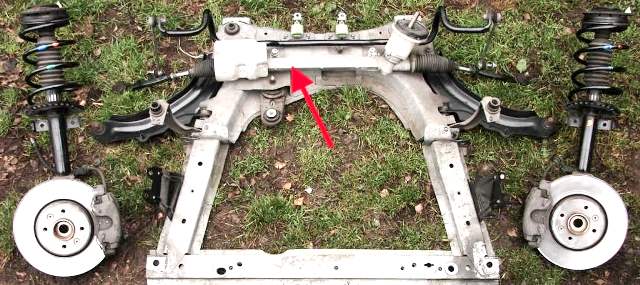
The steering gear is mounted on the front suspension subframe.

Steering gear: 1.12 — tie rod ends; 2.11 — tie rod ends; 3.10 - locknuts of the tie rod ends; 4.9 — steering rods; 5 - gear shaft of the steering mechanism; 6.16 - internal clamps for fastening the mud-protective cover; 7.17 - mud covers; 8.18 - outer clamps for fastening mud-protective covers; 13.15 — steering gear mounting brackets; 14 — steering rack housing
Tie rods 4 and 9 (Fig. 8) are attached to the steering rack with ball joints.
The tie rod ends 2 and 11 are connected to the steering knuckles of the front suspension using ball joints.










